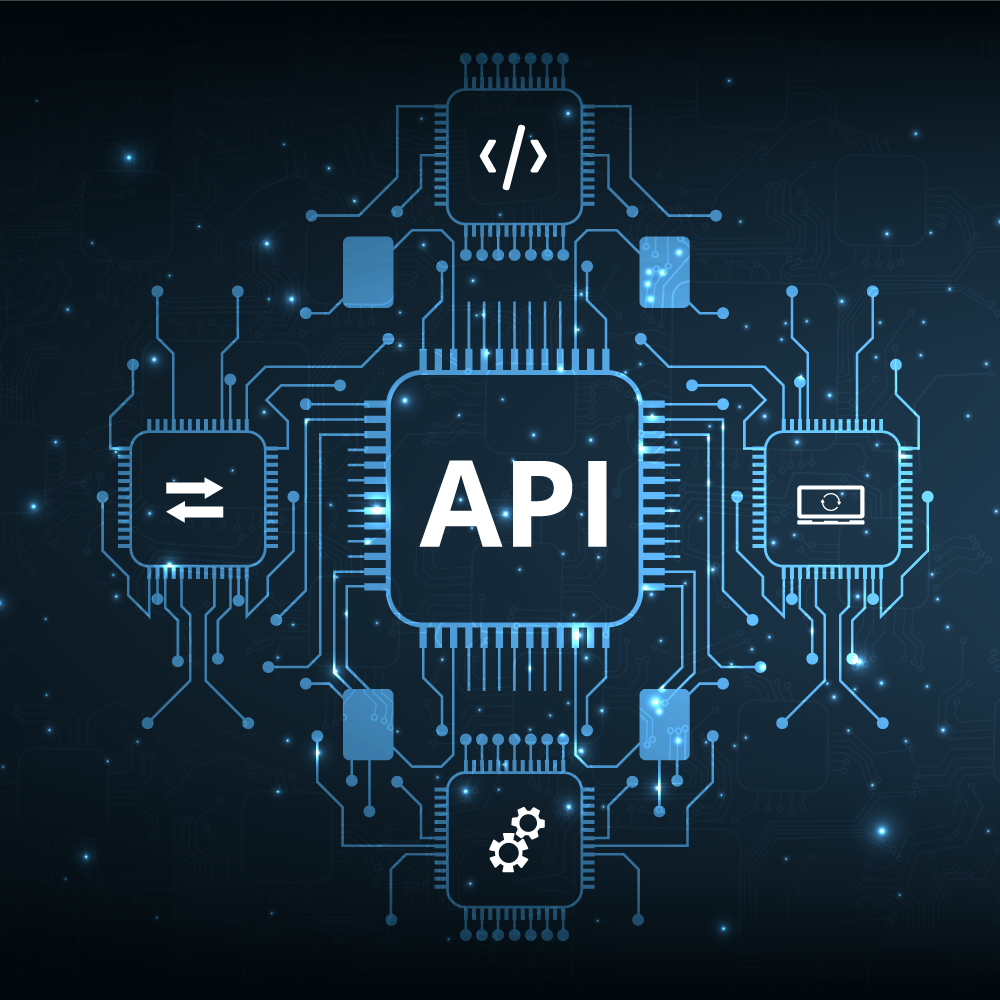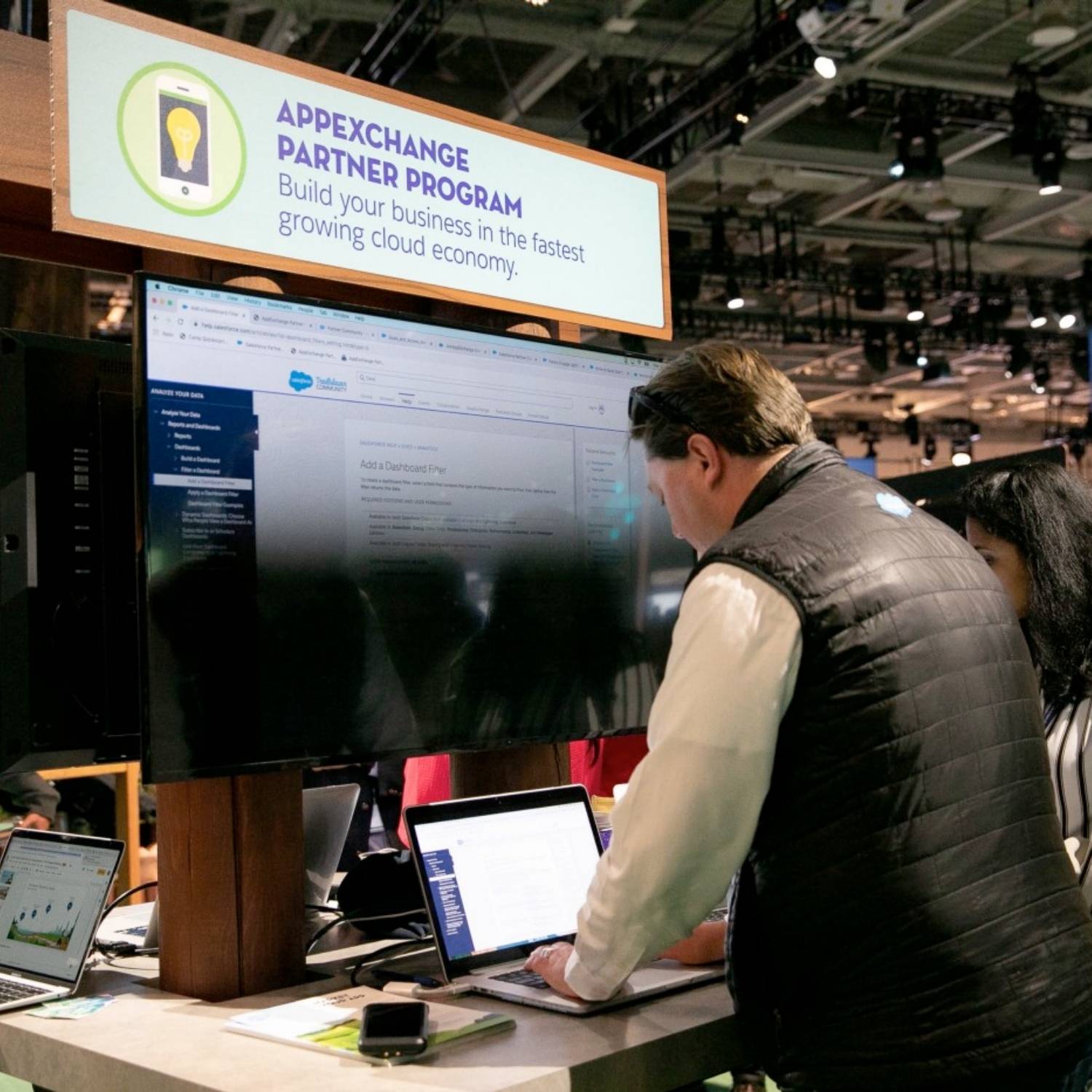
As 2019 demonstrated, Salesforce has continued to sweep the goals it sets for itself, with 33% year-over-year growth based on FY20 Third Quarter Results. Salesforce is an economic powerhouse — the latest IDC report reveals that the Salesforce Partner Ecosystem will generate 4.2 Million jobs as well as $1.2 Trillion in new business revenues by 2025.
For the third year in a row, CodeScience, conducted our annual State of AppExchange Partner Survey to examine trends, impacts, and results partners experience by becoming part of the ecosystem. We gathered results from 100 senior-level executives at existing-partner companies that focused on growth, product, strategy, revenue, and more.
From there, we’ve broken the data down into the same 5 sections as the previous years’ reports.
- Product and Company
- Growth
- Technology and Platform
- Salesforce as a Channel
- Investment
As a special feature for this year’s report, we partnered with Crunchbase, the leading platform for professionals to discover innovative companies, connect with the people behind them, and pursue new opportunities, to bring a deep exploration of investments and funding.
Prime Time
This year’s theme of Prime Time is based on Ichak Adizes’ Corporate Lifecycle Model, which enables the diagnosis of organizational systems and challenges. By all measures, the AppExchange sits squarely in the Prime Stage that Adizes’ outlines.
Indicators of the Prime Stage:
- Consistent, above-average growth
- Goals being set and exceeded
- Intra- and inter-organizational integration and alignment
Product and Company
In the Product and Company category, we examined the trends of how partners are building and implementing on the AppExchange as well as examining the motivating factors of why companies choose to join the program.
Top 3 Reasons for Joining the AppExchange:
- Faster Time to Market
- Access to the Install Base
- Gateway to the Enterprise
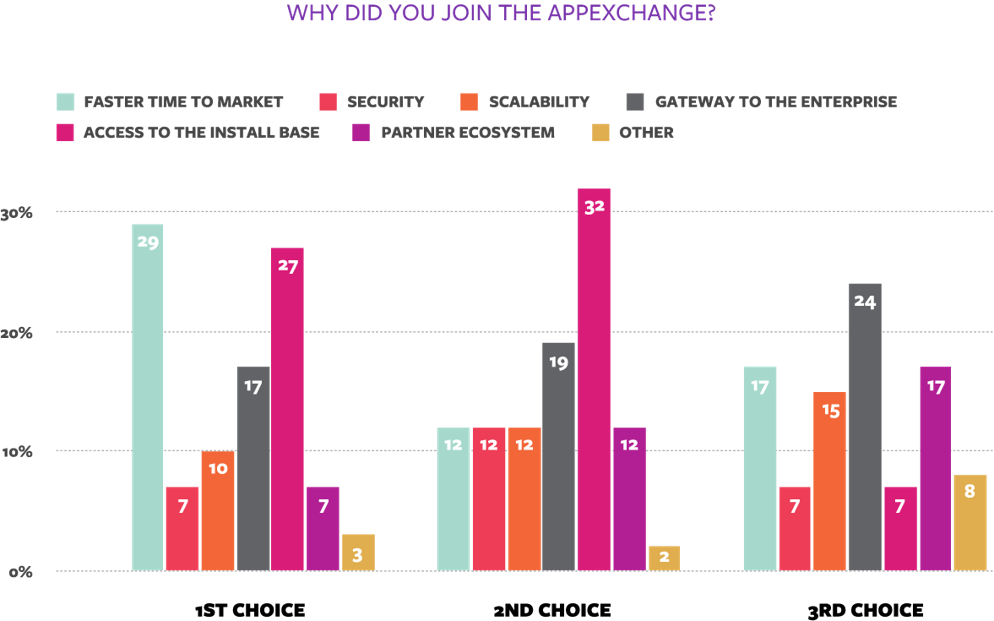
Once a software organization reaches the Prime stage, there is a shift that occurs — customers and partners look to the platform to solve business problems rather than technology problems. And we’ve seen this trend play out during the course of our survey. Technology-focused motivators like security and scalability have diminished importance while business-focused motivators (Faster Time to Market, Access to the Install Base, and Gateway to the Enterprise) have dominated as the primary motivating factors for joining the program.
The Multi-App Strategy Continues to Grow. More partners are building more applications on Salesforce. As we discussed in last year’s report, this creates a harmonious cycle between customers and partners, which generates powerful network effects. The trend of building additional products for the AppExchange has increased year-over-year and is now up 4% to 47% from the inception of the report in 2017.
More Products Mean More Implementations. We saw a positive correlation between the growth of SIs for Salesforce and SIs for ISVs. And the trend has continued upward. The number of respondents reporting they do not work with SIs dropped almost 50% from 36% to 19%.
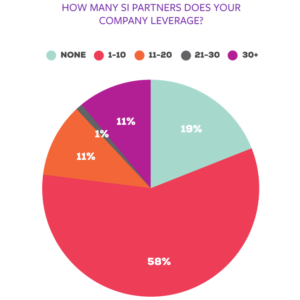
We expect that the relationships between SIs, PDOs, and partners will continue to deepen as the demand for deployments and customizations continue to rise.
Our largest lessons of 2019 were around how to structure our relationships with System Integrators for deployments as we scale. Setting up the correct incentives and priorities is key for customers, partners, and Geneia.”
Heather Lavoie, President | Geneia
Growth
Partners are confident in growing their businesses. For the 3rd year in a row, over 90% predict their revenues will increase. Of that, more than a third predict their revenues will significantly increase (more than 50%). When forecasting revenue growth rates, 85% predict an increase, with 27% predicting a significant increase.
Partners aren’t just holding onto this additional revenue. Partners plan to reinvest into R&D (both internal and external) to enhance their product offerings. Partners also state that they are growing headcount (just as IDC predicts) — and for the first time in our survey, the stated need for additional Sales personnel overtook the need for developer personnel.
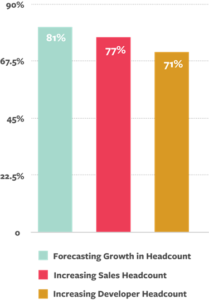
When we zero in on those high-growth partners (those who said their revenues are significantly increasing), we see that 50% of respondents predict a significant increase in sales personnel, developer personnel, and R&D investments.
Technology and Platform
Looking at the clouds on which partners build, Sales Cloud continues to dominate with 58%. This is a drop from last year — though this is not entirely unexpected with the rise of industry clouds.
With this year’s report, we broke out the Clouds on the Lightning Platform (force.com) and those that are not.
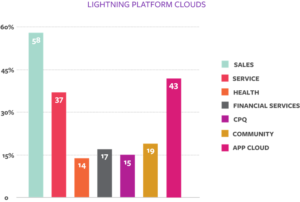
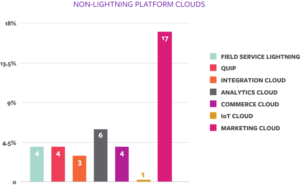
By in large, we find that the Lightning Platform Clouds are leveraged more often than other platforms. Through Salesforce’s aggressive M&A strategies, ISVs are beginning to build integrations and IP across non-Lightning platforms, as Salesforce enables them for ISVs. Not all new acquisitions are ready for ISVs, and the survey supports the slower adoption of non-Lightning based platforms.
We see this trend of “ISV-ready” emerging in our technology data.

As discussed in last year’s report, the longer a feature is in-market, the more important it becomes to ISVs. However, it is not a linear growth in importance, rather it follows the Forrester Adoption Curve, which shows an initial “pop” of interest and then a slight cooling before following a more normal growth pattern upward.
Salesforce as a Channel
The Salesforce channel continues to support partner growth. Just like last year, 45% of leads are coming from the Salesforce channel, which is up 10% from 2 years prior. This year, we looked in aggregate of the top 3 lead sources from Salesforce.
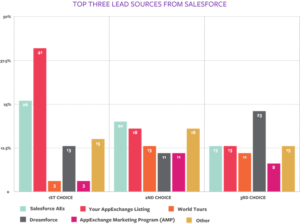
With nearly half of respondents stating their number one lead driver was their AppExchange listing, it is no wonder that Salesforce continues to make investments into the AppExchange Marketplace. This year marked the evolution of new AppExchange analytics and search tools. Key features included personalized app recommendations and improved analytics for partners. We are interested in seeing how partners will adopt and leverage these analytics to drive additional business.
When we look at the impact of the ISV program, the results have continued to rise. 65% of partners state that participation increased revenues. This is a 16% increase from the previous year.
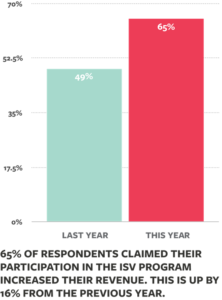
Investments (powered by Crunchbase)
For this year’s report, we partnered with Crunchbase to leverage their platform, data, and insights to uncover investment trends for partners on the AppExchange as well as broader trends in the industry.
Companies in the AppExchange ecosystem raised $2.5 billion in 2019 through October 20, 2019. This is on a path to match or slightly exceed 2018, which ended the year at $2.84 billion and 2017 at $2.85 billion. So far, 17% of venture-backed companies in the AppExchange raised funding in 2019.
Four AppExchange companies joined the unicorn list in 2019. These private companies valued over $1 billion in a 2019 funding round include Vlocity, Druva, Icertis, and nCino.
In 2018 four AppExchange companies joined the unicorn ranks namely, UiPath, WalkMe, Talkdesk, and Netskope.
Emerging unicorn companies valued above $500 million but less than $1 billion include People.ai, Hootsuite, Blend, Mixpanel, G2, Tealium, and Highspot.
Crunchbase Data Methodology
- The analysis is based on ISV partners matched to the Crunchbase dataset.
- Crunchbase includes all seed, early and late-stage venture financing, and corporate venture for this data. Excluded are private equity financing rounds from this analysis.
AppExchange ISVs and Global SaaS Funding
Two stats that captured our attention focused on the impact of AppExchange ISVs in global SaaS funding.
- AppExchange ISVs represent 7% of global funded SaaS companies.
- AppExchange ISVs received roughly 19% of global funding dollars.
AppExchange ISVs represent a greater share of investment dollars proportionately.
As we look at what 2020 holds, it will be interesting to track IPOs or see if ISVs choose to pursue late-stage financing to continue growth in private markets.
Final Thoughts
Ichak Adizes makes an important note for organizations that the Prime stage is not a discrete point in time. Rather it is a segment on the growth curve that organizations must continue to focus on to avoid aging and declining. We will be watching to see the decisions Salesforce makes to continue their growth and success.
This is only a handful of insights from our report. If you’d like to read the report in full, you can download it here.
If you’d like to learn more about our research, developing your AppExchange product, or optimizing your go-to-market strategy, please get in touch. I’m always happy to chat. At CodeScience, we help partners thrive on the Salesforce AppExchange.

